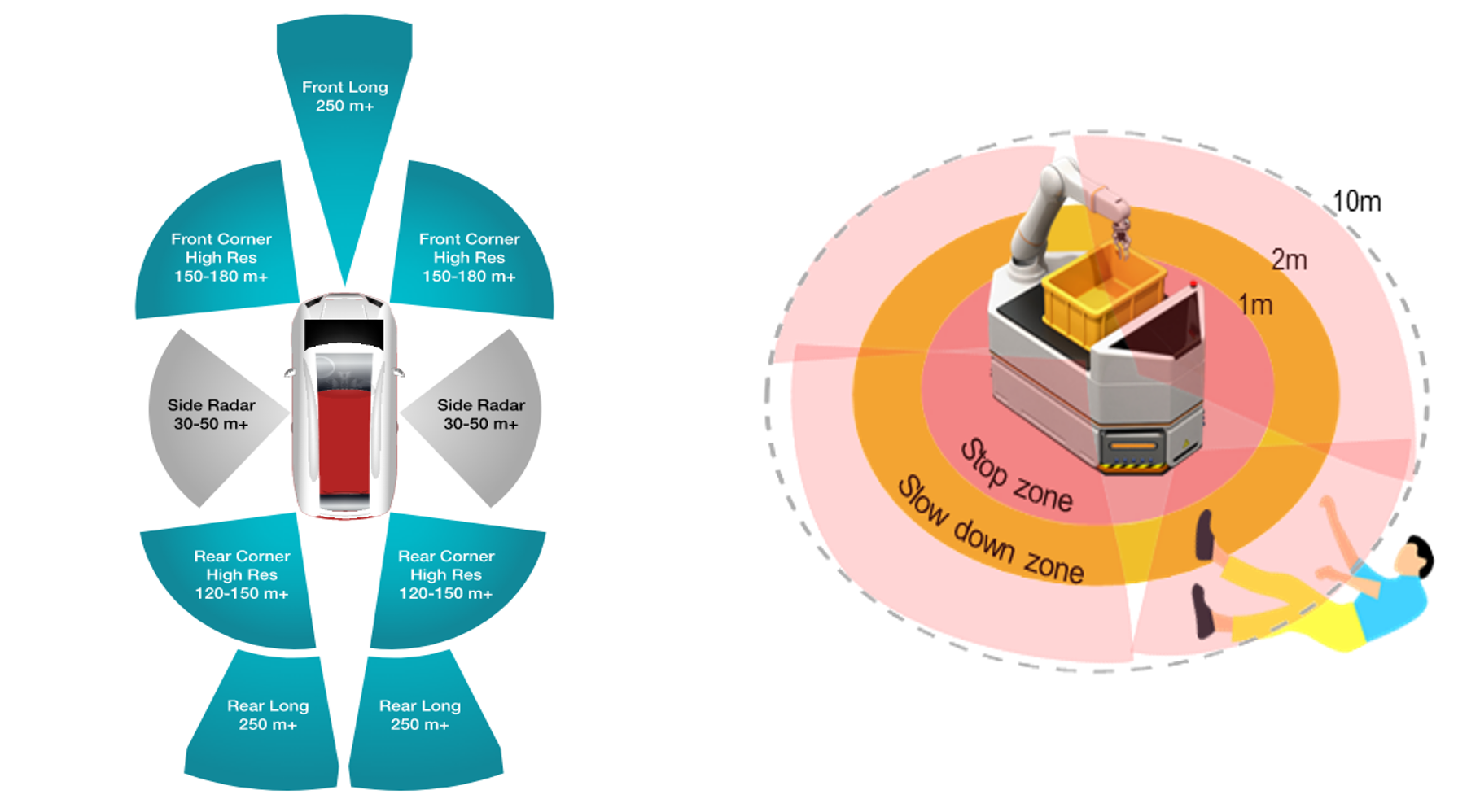SWRU598A June 2022 – April 2024 AWR1243 , AWR1642 , AWR1843 , AWR2243 , AWR2944 , AWR6443 , AWR6843 , AWRL1432 , AWRL6432 , IWR6843
2.1 Step-1 : End Equipment Requirements
The development of any system starts with the customer understanding the targeted application and product requirements definition(PRD) also called as targeted End Equipment Requirements of the system. The targeted system application could be Kick to Open system(boot open), Child Presence Detection, Seat Belt Reminder, Corner Radar, Side Radar and Long Radar for Automotive Domain and Gesture Recognition system, Traffic Monitoring System, Security and Surveillance System, Occupancy Detection, Safer Human Presence Detection for Industrial Domain. The targeted End Equipment Requirements of the system would be consisting of :
- Safety and Security
Requirements
- FuSa Compliance Integrity Levels (ASIL- A/B/C/D, SIL- 1/2/3/4)
- Essential FuSa Collaterals
- Device Security (Cryptographic Hardware Accelarators, Secure authenticated and encrypted boot support)
- End Equipment/ Application Performance Requirements governed Radar Processing Algorithms needs to comply with Safety of the Intended Functionality(SOTIF) as per ISO 21448 standard that guarantees intended functionality in the absence of faults for Automotive applications.
- Technical and Logical
Requirements (Functional Requirements)
- Antennas
- Power Block (Power supply)
- Communication Interfaces
- Flash Interfaces
- Debugging and Development Interfaces
- Power Management(PM) Components
- Form Factor
- Operational Frequency Range
- Operational Junction Temperature Range
- Maximum Range (LRR/MRR/SRR)
- Range Resolution
- Maximum Velocity
- Velocity Resolution
- Azimuthal Field of View(FOV)
- Azimuthal Angle Resolution
- Elevation Field of View(FOV)
- Elevation Angle Resolution
- Power Consumption (during Idle and Chirping time)
- Cost
- Response Time
The customer must be well aware of all the targeted end equipment requirements and the expected functional behavior of the system application. Understanding the functional behavior of system leads to awareness of Blocks/subsystems to be used in the system. Let's consider examples for designing a Corner Radar system for a Car and Industrial Robot sensor system for safer human presence detection around robot.
 Figure 2-2 Automotive Radar(Car) and
Industrial Robot(Safer Human Presence Detection)
Figure 2-2 Automotive Radar(Car) and
Industrial Robot(Safer Human Presence Detection)- Corner Radar System
- Medium Range Radar(MRR)
- ASIL-B FuSa Compliance as per ISO 26262
- Operating Junction Temperature range of -400c to 1250c
- AEC-Q100 qualification
- Small form factor
- Industrial Robot Sensor System
- Short Range Radar(SRR)
- SIL-2 FuSa Compliance as per IEC 61508
- Low power consumption
- Small form factor
- The targeted EER includes Application Performance Requirements, Functional Requirements, Safety and Security requirements.
Key deliverables from this "Step-1: End equipment requirements" is the customer develops an understanding of End equipment requirements constituting PRD and expected functional behavior of the system application. This step paves the way to the next step for developing the block diagram of the system with awareness of blocks/subsystems to be used in system application.